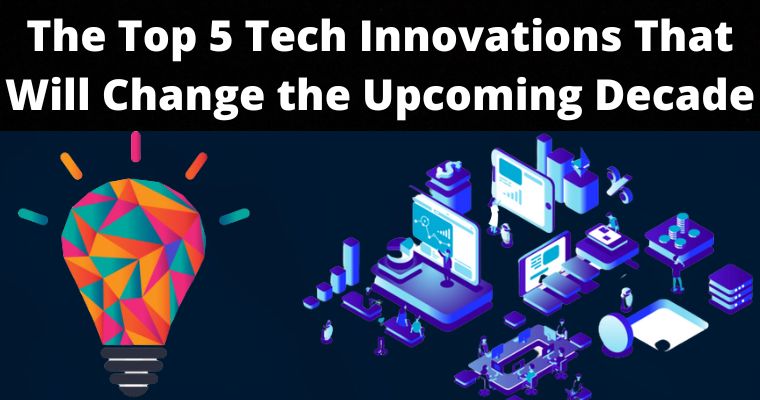During the last 20 years, technology has accelerated change at an astounding rate and scale. We have created a world in which knowledge may go to all parts of the planet quickly and at almost no cost.
This enables communication and cooperation at a scale that was previously thought of as science fiction.
We have created technology that allows us to take on tasks like battling coronaviruses and populating Mars, such as mRNA vaccines and reusable space rockets.
Even while these improvements are undoubtedly amazing, five fundamental technologies will probably lead us closer to the kind of future that is often depicted in movies.
Table of Contents
Innovations That Transform Our Way Of Life
3D Printing
In additive manufacturing, often known as 3D printing, a 3D object is created layer by layer from a digital file. Although gene editing and artificial intelligence may seem like higher-tech advancements, 3D printing can drastically change manufacturing and other sectors.
Future manufacturers might easily produce replacement components for equipment on-site using 3D printing. The use of 3D printers might replace whole manufacturing lines. We could print food, weapons, and even human tissue for organ transplants.
If you already have ideas, but do not know how to implement them, then try information technology consulting services or study a lot of free information on the Internet.
While 3D printing technology offers numerous advantages, there are also drawbacks, difficulties, and problems that must be faced.
We must take into account the environmental effect of the printers themselves, even if it has the potential to lessen the environmental impact of production by using fewer resources overall.
Cybersecurity
The collection of procedures and instruments used to preserve the information that any equipment, software program, or business creates is known as cybersecurity or technology security.
To safeguard sensitive, private, or secret data, security standards must be followed while using network systems, software, and applications.
Smart and Connected Things
As more and more devices become networkable, capable of connecting, and able to share data, we should expect to see continuing progress on the hardware side as well. The infrastructure, environment, and concept of ubiquitous computing are all included.
As smartphones are lightweight, portable, and power-efficient, they will likely continue to be the majority of people’s primary means of connecting to the digital world for some time.
Yet in addition to the smartwatches, Televisions, vehicles, kitchen appliances, and toilets that are currently on the market, many additional products will undergo modifications as a result of downsizing and advancements in user interface design.
Another significant trend is the combination of smart products with smart services that increase their utility.
As an illustration, the health insurance company Vitality tracks and evaluates its customers’ progress toward healthier lifestyles using a variety of smart devices, including watches and exercise equipment, and rewards them when they reach milestones like increasing their level of activity.
Internet of Things and 5G
We now have 4G, so what makes 5G different? Keep in mind that the technologies we use that demand a lot of data, including HD streaming, real-time industrial analytics, and driverless cars, all require a quicker connection.
Here, 5G excels thanks to network speeds up to 100 times faster than those of 4G, a greater number of linked devices, lower latency, and real-time data transmission.
The industrial internet of things (IIoT), which powers smart cities, robot-driven agriculture, and self-driving highway systems, will be supported by 5G.
In the post-Covid era, distant workplaces may leverage 5G connection for large data processing, desktop virtualization, live events/teleconferencing, real-time data sharing, etc.
Nanotechnology
The study and manipulation of extremely small-scale matter are known as nanotechnology (between one and one hundred nanometers). Materials that are stronger, lighter, and harder than those now utilized may be produced because of this game-changing technology.
A prime example of this ground-breaking discovery is graphene, which has a wide range of uses in industries including energy, personal care, food, pharmaceuticals, and much more.
Conclusion
The pace at which we have been using oil, coal, and gas over the last 100 years is not going to be able to continue for another 100 years.
Renewable energy sources like solar, wind, and hydroelectricity also have difficulties, such as moving the power to places where it cannot be produced effectively.



